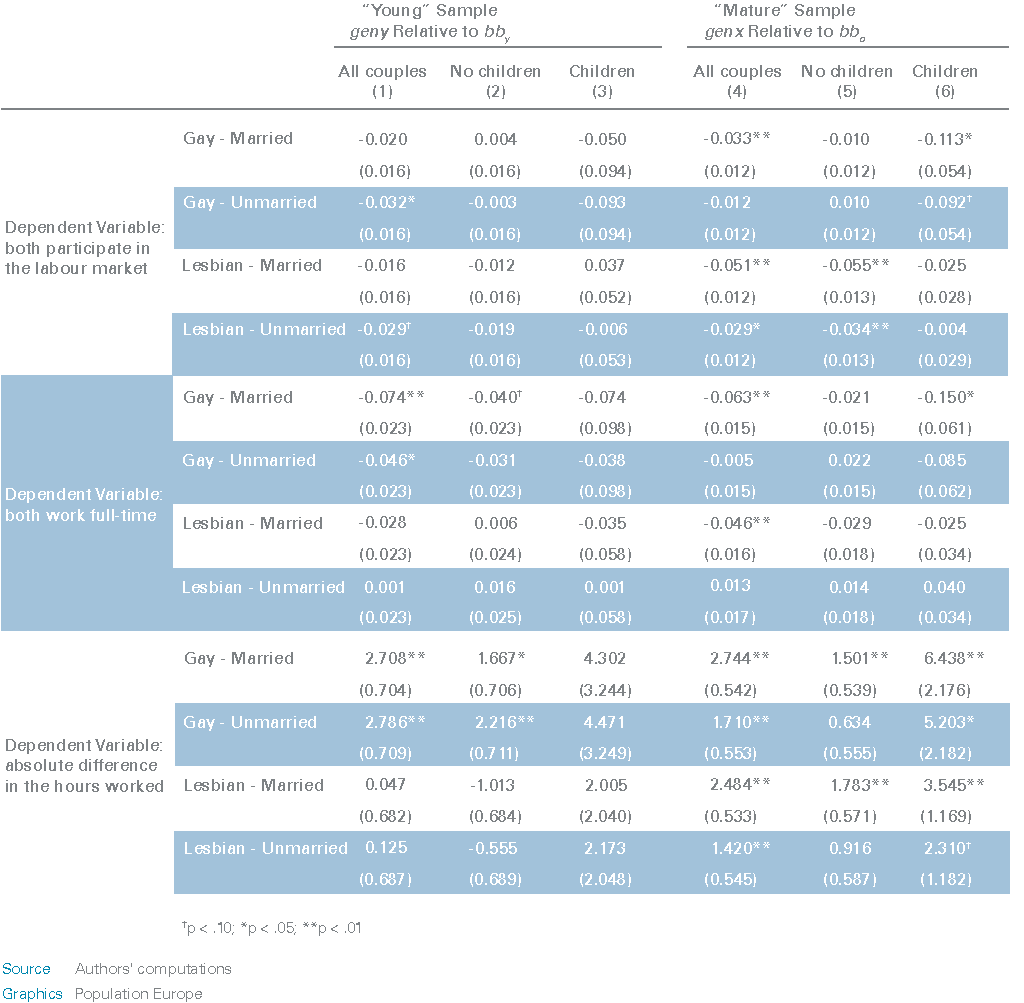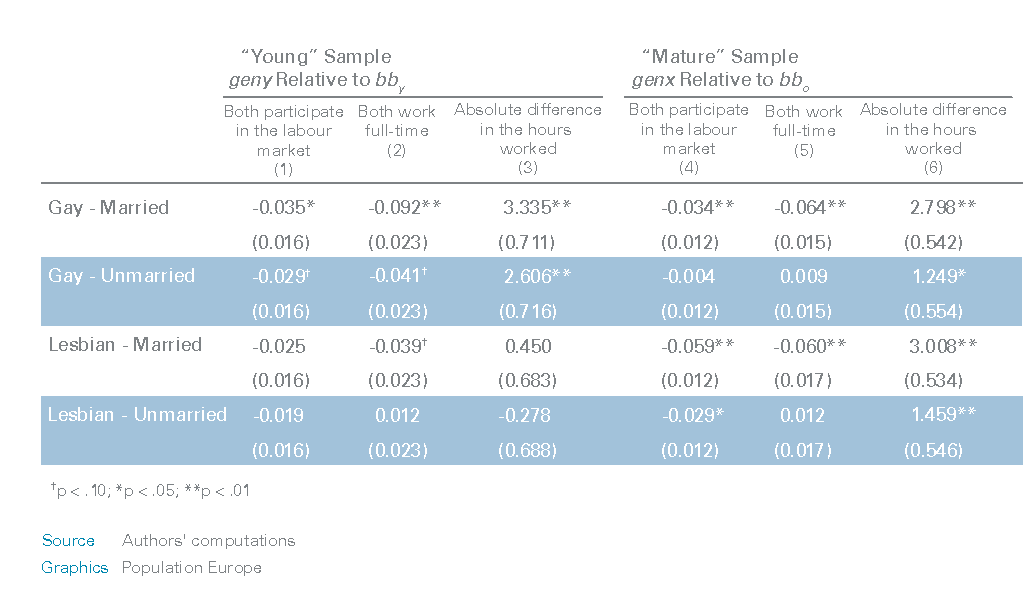Earning money, managing the home and looking after children? surely no couple would complain about a lack of work. There are many different answers to the question of how to best share these tasks. But are there significant differences between same-sex and different-sex couples when it comes to the division of household work, and do these differences change across generations? Lisa Giddings, John M. Nunley, Alyssa Schneebaum and Joachim Zietz sought out to find answers to these exact questions.
Three birth cohorts
Using data from the 1990 US census and the American Community Survey for each year between 2000 and 2011 (ACS), the researchers examined three birth cohorts: Baby Boomers (householders born between 1946 and 1965), Generation X (householders born between1966 and 1979) and Generation Y (householders born between 1980 and 1993). From these data they chose a sample of couples who were observed at the same age in different survey years. By doing that, they could make sure that changes observed between cohorts are not due to individual life cycle or age effects. The degree of household specialisation in a couple is measured with three indicators: the probability that both partners participate in the labour force, the probability that both work full time, and the absolute difference in the hours worked between partners.
The researchers found that same-sex couples are less likely then their different-sex counterparts to specialise in market and domestic spheres: “Relative to both married and unmarried different-sex couples, same-sex couples are generally more likely to have both partners participating in the labour force, more likely to have both partners working full time and differ less in hours worked between spouses/partners”.
A “specialisation gap”
This “specialisation gap” is largest when the comparison group is married different-sex couples. In all three measurements and across cohorts, same-sex couples are closer to unmarried cohabitating different-sex couples. The authors point out that “for the young sample, the difference between same-sex couples and unmarried different-sex couples is statistically insignificant in some instances,” meaning that young same-sex and different-sex couples are very similar in how they divide household work.
The presence of children usually has a big impact on the division of labour in a household. When comparing couples with children to other couples with children and those without children to other couples without children, the data showed that the observed specialisation gap between same-sex and different-sex couples is larger in all cohorts for the group with children than for those without. This means that the presence of children affects the division of labour in different-sex couples differently than in same-sex couples (see Table 1).

Table 1: Differences between couples with and without children across birth cohorts
Younger cohorts behave more similarly
An important general observation is that the specialisation gap narrows across cohorts. For example, the difference in the probability of working full time between same-sex male and married different-sex couples couples is 9.2 per cent smaller in the youngest cohort than it was in the oldest. Looking at the difference in the absolute hours worked, the difference between the couples has narrowed by just over three hours (see table 2).

Table 2: Differences between couples across birth cohorts
The authors conclude that these changes are due to significant changes in the legal, economic, and cultural environment over the last 50 years. However, they discuss whether, in terms of household specialisation, same-sex couples have become more like different-sex couples or the other way round.
This PopDigest is also available in French, Spanish and German.
This Population Digest has been published with financial support from the Progress Programme of the European Union in the framework of the project “Supporting a Partnership for Enhancing Europe’s Capacity to Tackle Demographic and Societal Change”.